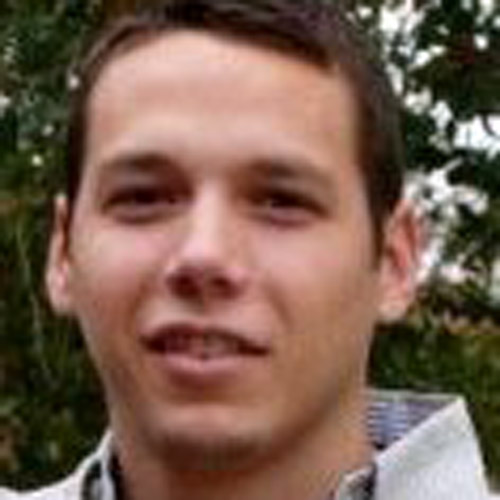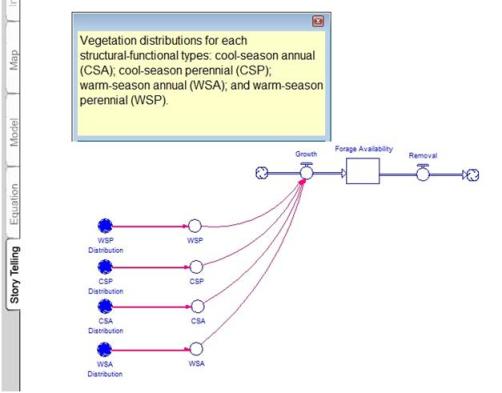Systems Thinking Offers a New Approach to Agricultural Education and Research
 Benjamin Turner
Benjamin Turner
When Benjamin Turner was studying agribusiness as an undergraduate, he struggled with explanations and investigations of agricultural systems that assumed high levels of
control. “The approach was very quantitative and reductionist,” says Turner. “The idea was that you could eliminate exogenous variables, get down to the things you can
control, and then predict costs, revenue, and the value of the product in the market.”
But there aren’t many meaningful points of control in agricultural systems. “Agriculture is based on soils, plants, animals, and climate,” says Turner, “and
you can’t control many variables across those elements.”
Systems Thinking adds a qualitative aspect to the linkages between plants, animals, soils, and the environment
That’s why an Introduction to Systems Thinking course delivered by Michael Goodman of Innovation Associates Organizational Learning at the King Ranch Institute for Ranch
Management was so appealing to Turner. “Systems Thinking adds a qualitative aspect to the linkages between plants, animals, soils, and the environment,” says Turner.
“Models help us identify the few points of control that actually do exist and have leverage through the system.”
Now a PhD candidate in Biological Science at South Dakota State University, Turner is using Systems Thinking in the classroom and for his dissertation research. “Using
Systems Thinking as an educational tool to help students investigate and understand agricultural related problems, like range management and forage supply and demand,
is very appealing,” says Turner. “My research builds on that interest by using Systems Thinking to develop a greater awareness of major land use changes in the northern
Great Plains, particularly the loss of grassland ecosystems.”
When he was working on his Master’s Degree, Turner used STELLA®, Systems Thinking software from isee systems, to develop a model of cowherd management and replacement
decisions. However, forage supply and demand, which is central to those decisions, had not been dynamically modeled. Wanting to know more, Turner was determined to
learn if these dynamics could be incorporated into a simplified model.
Forage supplies have to match these demands throughout the year, but forage quantity and quality differs with the seasons, soil quality,
precipitation amounts and other variables
“Cattle need to consume about 2% of their own body weight daily for bodily maintenance. Mother cows have to eat even more to support their growing calf and calves also
have to consume more if they are to meet performance goals. Forage supplies have to match these demands throughout the year, but forage quantity and quality differs
with the seasons, soil quality, precipitation amounts and other variables. If forage demand from animals is not met by standing forage, feed (e.g. harvested hay or
purchased feed) must be provided. The model that emerged considered that whole system, but was still quite complex.”
Because it includes numerous linkages, Turner’s animal-forage balance model can take a long time to explain. He knew it would be an overwhelming focus for a guest lecture.
Fortunately, he happened upon a YouTube video that demonstrated a STELLA model using Storytelling. “A lightbulb went off,” says Turner. “I thought ‘This is what I need.
This is how models should be presented.”
After creating a Story for the forage model, he presented it to a professor who teaches Integrated Ranch Management at South Dakota State University to solicit feedback
and ideas for model applications. “He said ‘You should teach my class!” explained Turner. “I told him that I really didn’t feel qualified but with my advisor’s
encouragement I offered to guest lecture and the professor agreed.”
Storytelling allows Turner to reveal one piece of the model at a time. “It builds up to the whole system so as not to overwhelm the audience with one view of a huge
model.” After attending the lecture, students completed a homework assignment in which they were given a scenario that described how a particular ranch functioned
in normal conditions. Students then used the model to determine how the system will change in drought conditions.
 Storytelling reveals plant functional-structural groups that influence forage growth
Storytelling reveals plant functional-structural groups that influence forage growth
The students in Turner’s guest lecture were all new to Systems Thinking but it was clear that they learned a lot from the model through storytelling. “On a post-course
evaluation, students wrote that Systems Thinking helped them understand ranch management in a new way,” says Turner. “One student wrote ‘It’s easier to see the circle
of it all” while several others wrote that the model made the material much easier to understand.”
On a post-course evaluation, students wrote that Systems Thinking helped them understand ranch management in a new way
“Thirty-six of the 41 students thought that Systems Thinking, like the STELLA model presented, should at least complement more traditional teaching methods – like PowerPoint
presentations,” says Turner. “Over 50% of the class felt that they understood the stocks and flows in the forage system. Thirty-eight of the 41 students in the class felt
they understood Systems Thinking and 30 students felt they would be able to build their own simple system dynamics model.”
Turner also learned a lot from his guest lecture. In particular, he learned that one three hour session isn’t enough time to accommodate the level of information he wants to
share. Next year, he’ll be teaching a special topics course over a longer period of time and take advantage of the same STELLA model and storytelling to focus on finding system
linkages with the greatest leverage. And, faculty at Texas A&M University Kingsville’s King Ranch Institute of Ranch Management have been extremely positive about Turner’s
animal-forage model, as they too are interested in modeling as an educational approach.
Outside of the lecture hall, Turner is developing his dissertation and investigating land use changes in the northern Great Plains. “There has been tremendous loss of grass
land in this region,” explains Turner. “That’s important because grassland has great economic value to livestock production. The region’s economy also counts on tourism dollars
from wildlife viewing and hunting – two activities that depend on grasslands. And open space is important to quality of life. It’s why a lot of people like living here.”
The differentiator of a systems model is not that it might exclude such informative variables, because they rightly include them. The key is that they include
the link from exogenous variables to the mental models and values of managers who make decisions
While he certainly isn’t the first biologist to study land use changes in the region, Turner’s system dynamics approach is novel. “There are a lot of models that predict loss
of grassland using the same reductionist approach applied to other agricultural issues,” says Turner, “which usually include things like prices and costs, subsidy levels, or
land productivity indexes as predictive measures. Although important, these variable don’t make land use decisions, but they do inform management. The differentiator of a
systems model is not that it might exclude such informative variables, because they rightly include them. The key is that they include the link from exogenous variables to
the mental models and values of managers who make decisions. That’s what my research is including, recognizing those links to better understand the future of grasslands.”
It’s certain that Turner’s dissertation model audience will benefit from his use of storytelling but that’s not the only STELLA feature that helps him apply Systems Thinking
to agricultural issues and problems. “A big part of STELLA’s benefit is user-friendliness,” says Turner. “And it allows me to create visually attractive models. It’s a lot
easier to engage people in a complex system when things look good.”
Acknowledgements – A special thanks to Dr. Sandy Smart of South Dakota State for allowing me to participate with his class. Also, a special thanks to both Michael Goodman
and Corey Peck for their continued support and guidance as I continue my graduate studies using Systems Thinking.